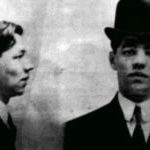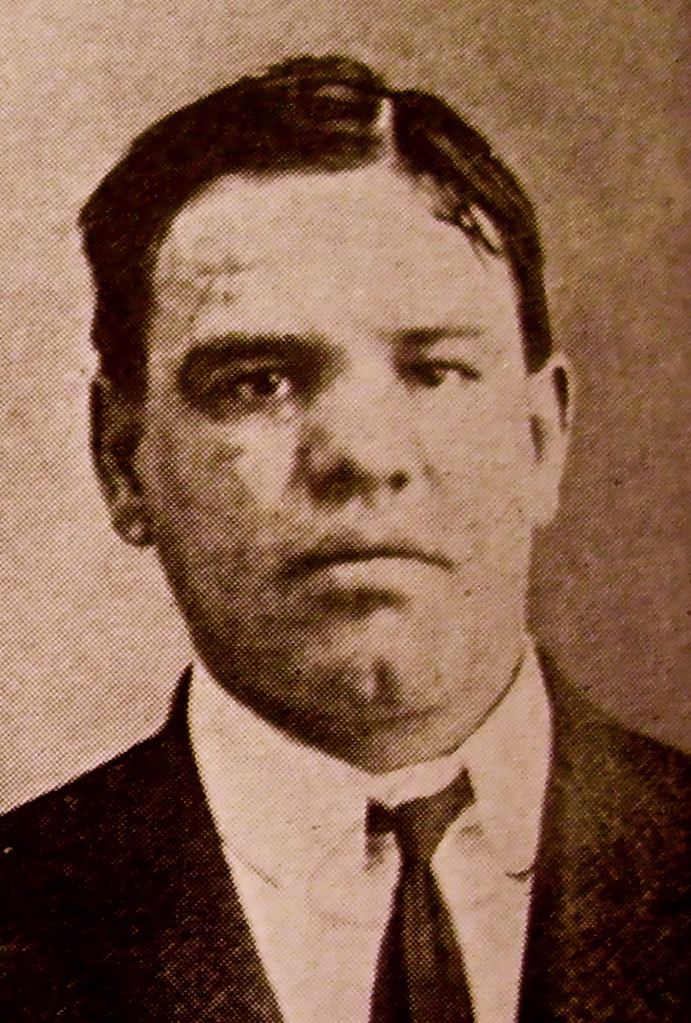Edward Monk Eastman was a mobster who dominated street crime in New York City around the turn of the 20th century. By some measures he was the last of the old-school hoods who came before the Italian-American Mafia and truly organized crime.
Though often referred to as one of the city’s great Jewish gangsters, it’s unlikely he was a Jew. His ethnicity remains something of a mystery, though he wasn’t Italian either.
Edward Eastman was born in 1875, probably in the Corlear’s Hook neighborhood in lower Manhattan, an area bustling with streetwalkers and other petty crime. Only limited information remains about his family, but Eastman’s father apparently abandoned them by the time Eastman was five.
His parents were Samuel Eastman, a wallpaper hanger who fought in the Civil War, and Mary Parks. Samuel lived with his wife and children on the Lower East Side in 1870 but was gone by 1880, and Mary and the kids moved in with her father, George Parks, on the Upper East Side.
Monk Eastman had three sisters, two older and one younger, and an older brother who apparently died young. Few if any records remain to indicate what became of Monk’s father.
Eastman apparently waited until his grandfather died before beginning a life of crime. George Parks helped set Eastman up with a pet shop on Broome Street, which runs through Little Italy and the Lower East Side. For years afterward, Eastman claimed to be a legitimate bird seller as a front for his criminal activities.
But at some point, a young Monk Eastman joined a street gang that focused most of its efforts on petty theft. That group, made up mostly of gentiles at the time, eventually became almost exclusively Jewish and came to be known as the Eastman Gang.
Eastman’s first known arrest occurred in his early 20s, in 1898, when he was convicted of larceny under the alias William Murray. He served three months in the penitentiary on Blackwell Island (now Roosevelt Island).
By this time Eastman’s gang was expanding its turf and moving into new crimes, especially prostitution. They ran a series of brothels along Allen Street, referring to themselves at the time as the Allen Street Cadets. They also dabbled in gambling, opium and enforcement.
Monk was small, but he developed a tough reputation, and it made him friends in the underground. He was appointed bouncer at the New Irving Hall, a popular club near his pet shop. He built his earliest ties with Tammany Hall politicians, who put his talents to political use. Gradually his gang became the Eastmans.
Crime in New York City at the turn of the 20th century was divvied up among a gaggle of street gangs, all competing for turf, some more powerful than others. Most powerful of them all was the Five Points Gang, a mob of immigrant criminals who dominated the Lower East Side.

But the Eastman Gang, as it came to be known, was a close rival. Eastman considered Paul Kelly, head of the Five Points Gang, his arch-enemy, and their enmity broke out into open mob warfare. The battles between the Five Pointers and the Eastmans raged in the streets of New York, reminding many residents of the fierce gang battles of a generation earlier. At first Monk had the upper hand. He led his own men into battle, and his leadership style convinced many enemy gangsters to switch sides. But the war got out of control, even by the lax standards of Tammany Hall. Innocent civilians were being killed by gang gunfire on city streets in broad daylight.
So to avoid more bloodshed, Tammany Hall arranged a boxing match to settle the score between Eastman and Kelly. The two faced off in a ring inside an old barn in the Bronx. It was a bruiser, lasting two hours, and it was a draw.
Eastman’s reign as a leader in the gang wars of New York City came to an end on February 3, 1904, when he tried to mug a young man in Times Square. The man’s family had hired Pinkerton agents to follow him and keep him out of trouble, and the guards stopped the robbery.
Monk ran away shooting, but the cops caught him. His bloody wars with Kelly had burned up his good will with Tammany Hall, leaving him to face the consequences of his crime without protection. He was convicted that year and sentenced to 10 years at Sing Sing state prison.
He served five. While he was gone, the old Eastman Gang had begun to fall apart. Max “Kid Twist” Zwerbach seized control by killing off his rival, Richie Fitzpatrick, as well as Fitzpatrick’s followers. Four years later, Kelly had Zwerbach murdered.
“Big” Jack Zelig, who took over next, divided the gang into three pieces and gave the other two to henchmen who promptly turned on him and started a new war within the gang. By the end, the Eastmans were all but disbanded.
Following his release in 1909, Eastman made a living primarily by petty theft. He got hooked on opium and was in and out of jail several times.
But in 1917, with the country headed to Europe, Eastman signed up for service in World War I, he was 42. His honorable service led the governor to restore his civil rights, which were stripped when he was convicted of the mugging.
Once out of uniform, though, Monk returned to his old ways. They quickly got him killed.

On December 26, 1920, Eastman got into an argument at a cafe with a crooked Prohibition agent over dirty money. When the agent left, Eastman followed him and called him a rat. The agent, who said he felt threatened, drew his pistol and shot Eastman dead. The agent later served three years in prison for the murder.
Monk Eastman is buried in Cypress Hills Cemetery in Brooklyn. Despite his connections to the Jewish mob, there is little evidence Eastman himself was Jewish. Neither his parents nor any of his siblings were married in Jewish weddings, and he was not buried in a Jewish cemetery. His grandfather George Parks died in a Protestant nursing home. And his brother-in-law told the medical examiner Eastman wasn’t a Jew.

Who do you, in your own opinion, think was great between Charlie Lucky Luciano and Carlo Gambino?
What do you consider when arriving at your choice?
I’m a fan of Lucky Luciano because he had a plan for the mafia and let nothing stand in his way. However, Gambino was calculating as well. He was old school mafioso who kept his head down and ran his family in a difficult time and did it really well. But, in the end, my vote goes with Luciano for creating the commission and basically paving the way for bosses to succeed in the future.